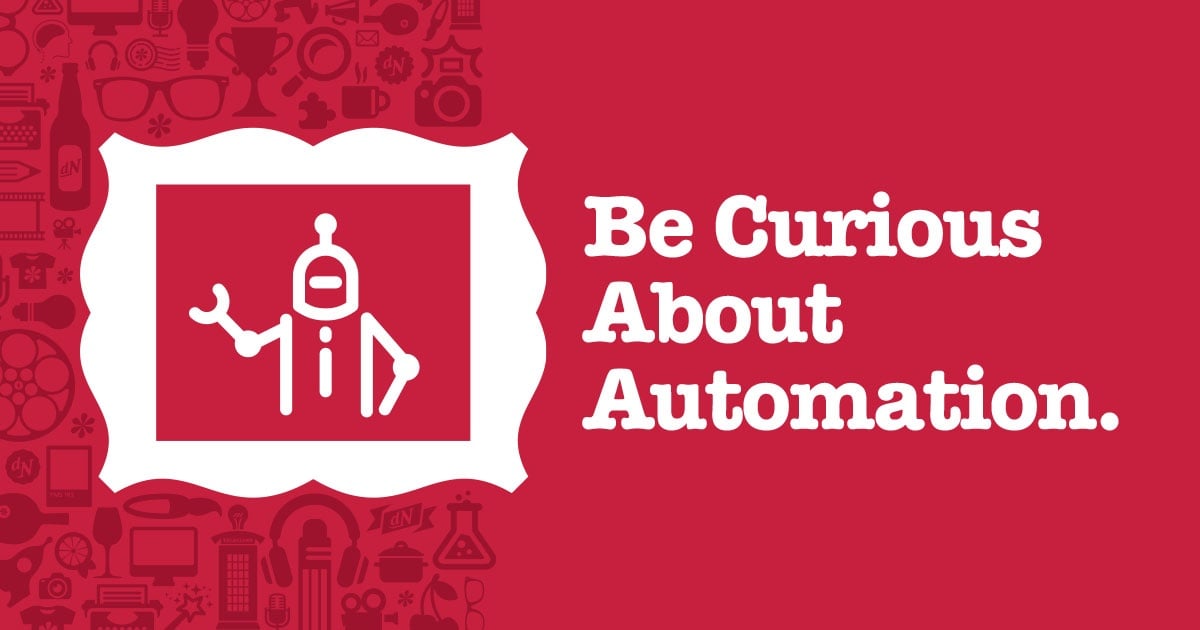This summer, a whole new batch of graduates headed out to the working world ready to put what they learned to good use. Yet, what I’ve noticed, as an employer, is that the skills many graduates are leaving their four-year institutions with are skills most employers already have automated or are moving to automate.
Automation was once the realm of the Jetsons and high tech manufacturing (“The robots are coming for our jobs!”)—something beyond the grasp of most small and mid-size companies.
With constant advances, automation is at the fingertips of almost all industries now. It’s in our homes, our cars and our daily lives. We’ve come to expect it and sometimes are shocked when something isn’t automated—like a bathroom faucet that you have to manually turn on when you’re used to thrusting your hands under the faucet and immediately having water pour out at the right temperature. Oh, the humanity.
The progression of automation over time has answered several needs, one of them being a way to reduce labor costs and increase productivity. Often this is met with a sense of alarm (aforementioned robots and jobs), but automation has made many more jobs possible and drives better skills and higher wages in the long run.
The definition of automation is the technology by which a process or procedure is performed without human assistance. Simple enough. But what does that mean for companies looking to automate their processes?
Many companies have their eyes firmly fixed on automation, as the future of their industry, whether it’s production, a process (like marketing) or future technology like driverless cars. There is no doubt we are on a constant march toward automating more processes in our lives and industries.
As we approach lower employment rates, automation seems poised to fulfill jobs that many employers struggle to fill. For companies and people who work for them who are seeking to understand and use automation for these reasons, there’s one way to get there: be curious. Ask yourself, “What could be better about this process, that frees people up to do more important work?” Automation implementation is born where curiosity and necessity intersect.
Most non-industrial process automation within smaller companies begins with a Google search. It could be a SaaS platform, online timekeeping solution, APIs that help programs talk to each other, programmatic advertising and automated marketing activities, automated billing and collections, or HR platforms that automate regular tasks and free up time for other responsibilities.
Automation comes in many forms, from simple to highly complex, and can help you build efficiencies and boost productivity while reducing your overall labor needs at a time when finding the right employees is challenging. Additionally, it can lead to innovation, keep employees happier by reducing their workload and providing them with better tools to do their job more accurately.
Automation isn’t a silver bullet. It isn’t really as easy as searching the internet, picking one and BOOM—you’ve got efficiency! It often takes a ramp up of research and training, as well as understanding and adoption. However, overcoming these hurdles pays off in the long run if you can focus your employees’ strengths on productive activities that drive results and/or revenue.
Bringing it back to graduates, automation of workplace functions isn’t something that is being taught in a lot of four year institutions. Graduates, employees, business owners and the C-suite need to be curious about how automation can benefit themselves or the business. The curiosity and drive to find a better solution is the place to start. There are a lot of classes through MOOC (Massive Open Online Classroom) platforms like edX and Coursera, as well as learning sites like Lynda.com that help the curious expand their knowledge and learn more about processes that can help build efficiency and profit in business, among many other topics.
These platforms aren’t just for students—they’re for anyone who is curious and seeks to learn. Providing membership to your employees can pay dividends and allow them to be problem solvers within your industry. A small price to pay for something can yield big results.


